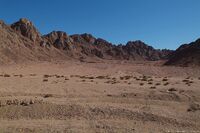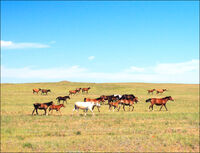| Union of the Jelbic Peoples Jelbijékaiék Krsyjogad | |
|---|---|

| |
 | |
 | |
| Government | |
| Government type | Supranational union |
| Head of State | Protector of the Jelbic Peoples |
| Legislative | Kurultai |
| Founded | Treaty of the Union of the Jelbic Peoples (April 4275) |
| Member States | Vanuku (4275) Barmenistan (4275) Pontesi (4285) Jelbania (4288) |
| Demographics | |
| Official languages | Jelbek, Brmek, Pntek, Wrnukaek |
| Area | 3,624,300 km² (4288) |
| Population | 398,485,764 (4288) |
The Jelbic Union, officially the Union of the Jelbic Peoples (Jelbek: Jelbijékaiék Krsyjogad) is a supranational federal union joining together the Jelbic nations of Terra. It is situated on the continent of Majatra. It is bordered by the Verranderlijke Ocean to the west, Beiteynu to the northwest, the Majatran Sea to the east, Deltaria to the southeast, Lake Majatra to the south, and Zardugal to the southwest.
The Jelbic Union is spiritually if not directly the descendant of the Empire of the Jelbic Peoples and the Jelbic Union of the North.
The Jelbic Union was established in 4275 by the Treaty of the Union of the Jelbic Peoples. Per that treaty, the eligible member nations are Jelbania, Vanuku, Barmenistan, and Pontesi. As of 4288 it is comprised of the states of Vanuku, Barmenistan, Pontesi, and Jelbania.
Etymology[]
The Union of the Jelbic Peoples (Jelbek: Jelbijékaiék Krsyjogad) is spiritually if not directly the descendant of the Empire of the Jelbic Peoples (Jelbek: Jelbijékaiék Jezknzknstat) and the Jelbic Union of the North (Jelbek: Jelbijékaiék Krsyjogadnrkta). The Jelbek name of the Union was specifically chosen to evoke its predecessor states.
History[]
The Jelbic Union was officially formed in 4275 with the signing of the Treaty of the Union of the Jelbic Peoples by Sultan Jens I of Barmenistan and King Juhn VIII of Vanuku. Barmenistan was under international pressure, primarily from Beiteynu and Vanuku, to end the persecution of Hosians and other minority religions that had begun early in Jens' reign. Jens, eager to save face, and Juhn, eager to end the mistreatment of Hosians in a Jelbic nation, agreed to recognize Juhn as the first official Protector of the Jelbic Peoples since the death of Juhn III in 4006, albeit with a different electoral structure than was used previously to elect the the Protector, a fact which Jelbania and Pontesi would protest later.
By the terms of the treaty, Barmenistan and Vanuku were given a majority of the electoral votes for the title, and each recognized the Protector as the head of state of the Union. The Protector was given broad powers to conduct international affairs and war in the name of the Union.
In the 4280s, spurred by the resurgence of pan-Jelbicism and aided by the collapse of anti-Jelbic governments in Pontesi and Jelbania, those states joined the Union. They expressed reservations with the number of electoral votes granted to Barmenistan and Vanuku, nervous that it would lead to a de facto Banmek-Sntazed hereditary title, as the Sultan's daughter married into the Banmek-Sntazed dynasty of Vanuku and her children eventually came to rule as Twin Sultans in Barmenistan after the death of Jens in 4282. Several politicians in Pontesia and Jelbania pushed for the implementation of a requirement for 2/3rds support for the election of a Protector. Nevertheless, faced with the potential of a newly ascendant pan-Jelbic unity, each nation joined the Union.
Geography[]
The physical geography of the Jelbic Union varies widely due to its size.
Due to the prevalence of moisture-bearing winds from the north and east, Pontesi broadly temperate. Pontesi is heavily mountainous.
Barmenistan, less affected by winds, is mountainous and broadly hot and desertified.

Vanuku's Woestenij desert
Vanuku is similar to Barmenistan in geographic character, though its shoreline on the coast of the Majatran Sea is cooled by winds off the sea and is fertile. The vast majority of the population of Vanuku lives in these heavily developed coastal strips, known as the City Coast.

Jelbania's Great Perimor Steppe
The border of Vanuku and Jelbania is the high and remarkably desolate Baniray Steppe, a mountainous desert plateau. Slightly lower and less desertified is the Great Perimor Steppe, which covers nearly one third of the area of Jelbania and is only sparsely populated, but which is central to Jelbic history. Notably, the Jelbanian coast on the Majatran Sea is mountainous, blocking the moisture-bearing winds from the east and causing the interior of Jelbania to be incredibly dry year round.
Government and politics[]
Government[]
Protector of the Jelbic Peoples[]
The title Protector of the Jelbic Peoples (Jelbek: Jelbijékaiék Mrjkai), first claimed in 3508 by Lubomir II Čestibor of Deltaria, long predates the foundation of the Jelbic Union. In 3522, Lubomir named the title of Protector electoral and instituted a system which allotted votes to the traditionally Jelbic nations.
Since 3777, the Kings of Vanuku have claimed the title due to their descent from Laurens-Wrntukai, the first Vanukuese Protector, but only several were formally elected. The formation of the Jelbic Union gave legitimacy to the claim of King Juhn VIII.
| Portrait | Name | Dynasty | Nationality | Reign | Notes |
|---|---|---|---|---|---|
 |
Juhn VIII | Banmek-Sntazed | Vanuku | 4275 - 4286 | Established the Union of the Jelbic Peoples. |
 |
Temrkai | Banmek-Sntazed | Vanuku | 4286 - |
Foreign Relations[]
Military[]
Economy[]
Demographics[]
Culture[]
Sports[]
Holidays[]
Symbolism[]
| Union of the Jelbic Peoples topics | ||
| Constituent Nations | Barmenistan | Jelbania | Pontesi | Vanuku | |
| History | <small]]>History of the Union of the Jelbic Peoples | History of Barmenistan | History of Jelbania | History of Pontesi | History of Vanuku | |
| Geography | Geography of the Union of the Jelbic Peoples | Geography of Barmenistan | Geography of Jelbania | Geography of Pontesi | Geography of Vanuku | |
| Demographics | Ethnicity: Jelbic peoples | Brmeks | Jelbeks | Pnteks | Vanukeans | Kathurans | Seluco-Barmenians | Arev Mardik | Yeudis | Majatrans Religion: Ahmadism | Hosianism | Felinism | Barmenian Apostolic Church | Israism | Halawism | |
| Politics & Government | Protector of the Jelbic Peoples | Kurultai of the Union of the Jelbic Peoples | |
| People | Juhn VIII | Temrkai | |
| Military | Military of the Union of the Jelbic Peoples | |
